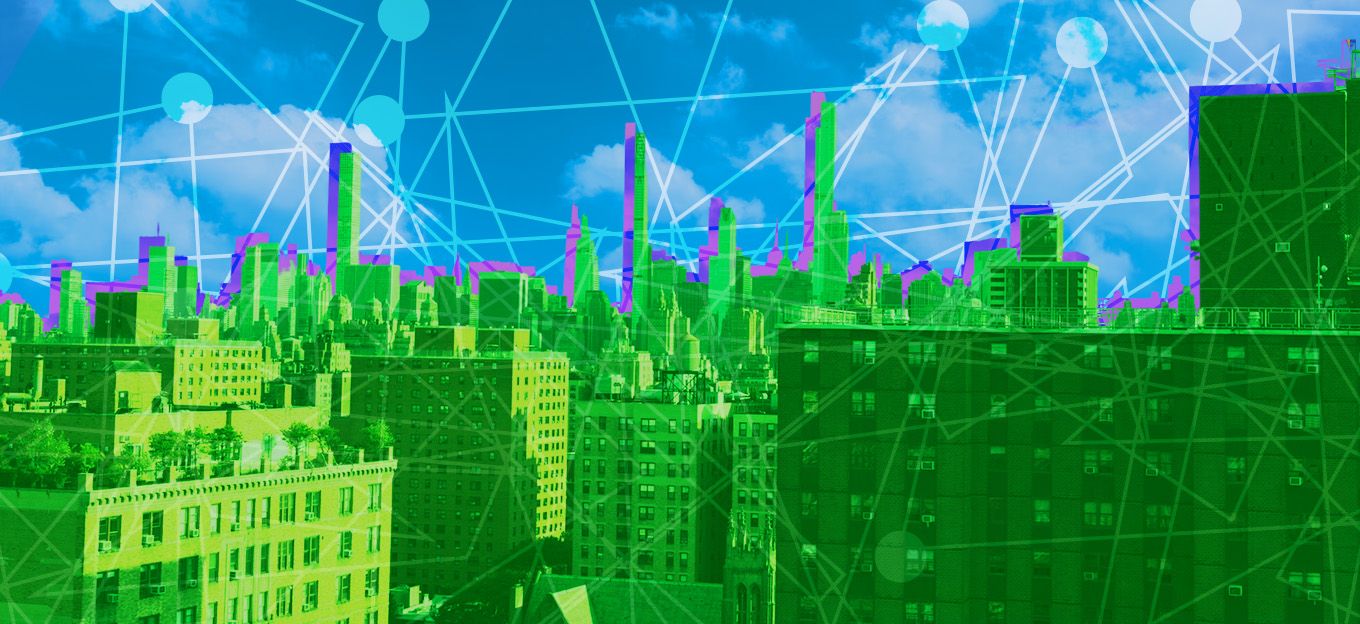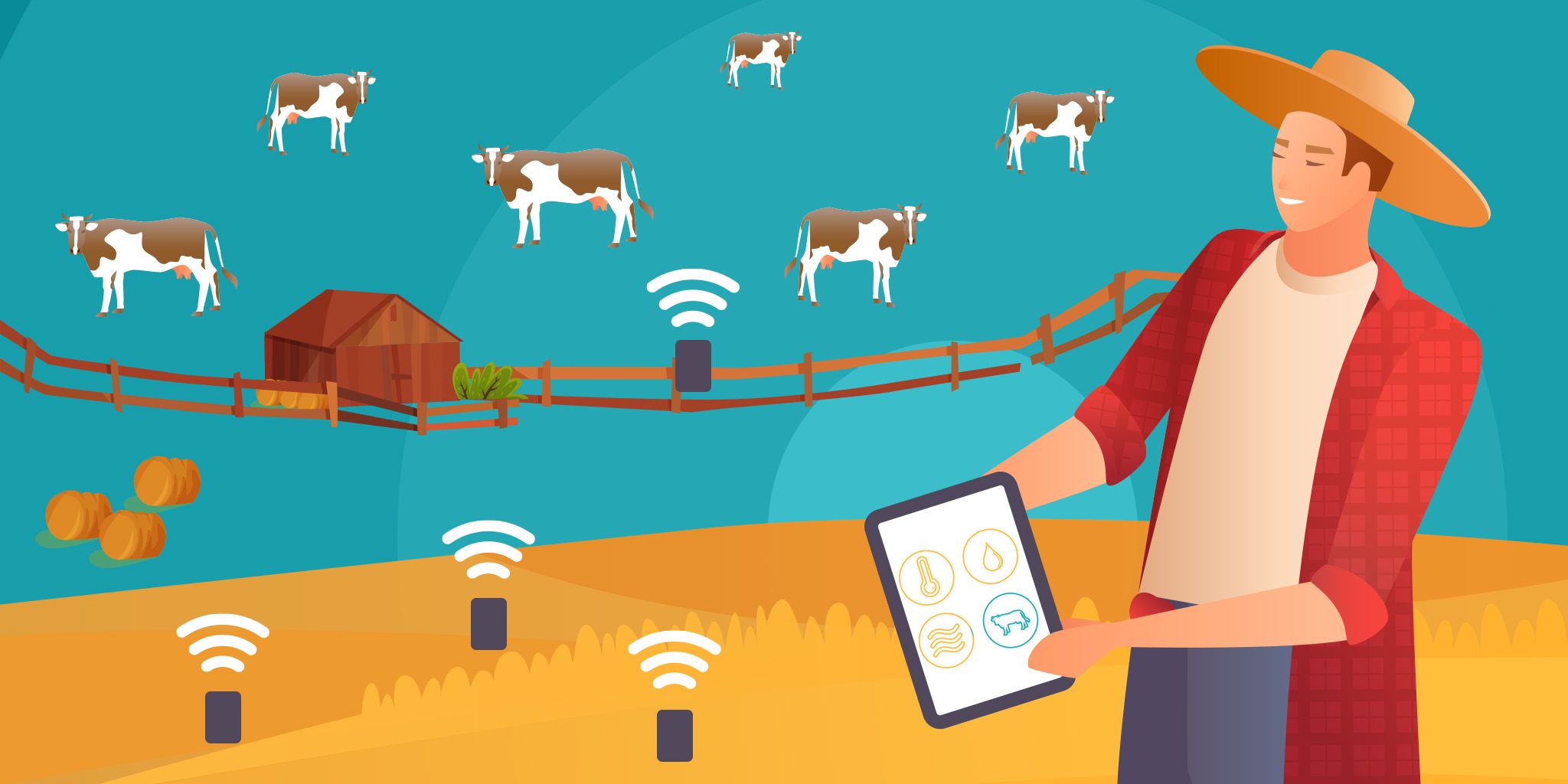IoT - The Great Innovation Enabler
IoT - The Great Innovation Enabler
- Last Updated: December 2, 2024
Vodafone Business
- Last Updated: December 2, 2024



Whether you know it or not, within the last 48 hours, likely, you've probably had several interactions with the Internet of Things (IoT).
Across the world, millions of devices are now connected. The market is projected to be worth more than $1.3 trillion globally by 2026, and that’s just the beginning. From being able to remotely control our household heating via our phones to tracking parcel deliveries to the minute, the power of data is now everywhere.
Beyond consumerization, IoT is also now a critical operational asset for businesses. Its power to enhance business operations is proven. From manufacturing to retail and logistics, it enables automation of processes, enhanced collaboration between stakeholders, and closer tracking of products across a supply chain – all things that increase efficiency, promote innovation, lessen wastage, and boost profit margins. There is no limit to what it can encompass.
"Beyond consumerization, IoT is also now a critical operational asset for businesses."
The question, therefore, is no longer whether or not IoT benefits companies, but how exactly industries can fully harness the power it provides.
It’s More Than a Device
We’ve never been so connected. Free-flowing data is one thing, but capturing it and analyzing it to create tangible business decisions is another, more complicated thing. As the adage goes “With great power comes great responsibility," and in our world, this can translate to “With more data, the greater the responsibility to make better business decisions and take action.”
Digitalization plans for many businesses have undeniably accelerated, especially post-COVID-19. This crisis highlighted how the ability to rely upon data-informed decisions could make the difference between success and failure for organizations.
Take the agricultural sector – IoT is helping farms become more profitable, competitive, and eco-friendly. For instance, real-time insights and connectivity offer support for both a reduction in pesticide usage and the conservation of water and energy.
One example of this is Hugh Lowe Farms, Wimbledon’s exclusive strawberry supplier, which used IoT connectivity from MYFARMWEB to optimize its farming. Strawberries are very susceptible to disease and the technology means that the farm can make better decisions on how to apply controls to protect them. IoT connectivity is used to locate each load heading to Wimbledon and provide detailed feedback on temperature, collisions, and vibrations in the packaging. This means they can step in and fix discrepancies almost immediately, ensuring that customers only receive the best product whilst minimizing wastage.
Data is the lifeblood of any modern business across any industry. Just like farming, businesses of all sizes can benefit from connectivity and the data it provides to improve their operations and productivity. This can range from small retailers that want to differentiate from their larger competition by optimizing their supply chain to healthcare organizations that want to provide a better experience for patients with smarter decisions.
IoT Creating the Innovation for Tomorrow’s Society
Cities cover 2 percent of the world's surface, and within the European Union, this proportion is even greater, with 75 percent of EU citizens currently living in cities. With this in mind, cities are becoming the linchpin of tomorrow’s world.
According to new research, 88 percent of European cities have started their digital transformation journey and 72 percent believe that smart initiatives have been successful to meet ongoing policy objectives – a journey that is ensuring our cities are fit for the future. By creating systems that connect real-world assets with digital technology and analytics, cities can produce usable insights that can be quickly and cost-effectively implemented.
Building a smart city eco-system takes time. The output of spending time creating systems through smart solutions is more efficient transport to improved waste management systems. Smart, digital transformation isn’t just about ‘upgrading’ technology for better business insights and efficiencies; it has a direct impact on citizens’ lives, increased well-being, quality of life, and health.
For example, we all saw how the environment reacted when the pandemic forced us to severely restrict our movement and transportation, it flourished. As traffic and congestion returned to normal levels post-pandemic, Midlands Future Mobility (MFM) consortium created a powerful new mobility cloud platform to connect vehicles and improve the safety of road users on the urban, rural, and highway roads of the UK.
By employing cutting-edge mobile radio technology – a network of smart sensors and data analytics to build transport infrastructure that reacts to changes in real time – we’re starting to create a smarter, more connected environment. An environment where cars can see around corners, anticipate pedestrians walking into the street and maximize the efficiencies of vehicles. The benefits mean reduced journey times, lower carbon emissions, improved citizen health, and more efficient routes. The business world and our consumer lifestyles combine for true innovation.
Bridging the Gap Between Business Needs Now and the Possibilities of Tomorrow
While it is sometimes difficult to comprehend a future of intelligent assets that can communicate with the world around them, it’s already become a reality.
Businesses need to switch to a digital-first mindset now to continue thriving in the future. IoT is the change agent that allows a business to compete in a digital world. Treating IoT as a critical part of a technology strategy, integrating it with business systems, and selecting robust connectivity are all essential components of any successful implementation.
One thing is certain - IoT is here to stay. Businesses that recognize this and tap into its power and potential will be able to look at the future with confidence. Like it or not, society is adapting at a rate of knots and we’re still facing the biggest challenges of our time. It is time for all stakeholders across the public and private sectors to pull together to prioritize the development of innovative technologies, adequate infrastructure, and digital skills. It’s only then that IoT will truly unleash the reality of innovation that benefits society and business needs. Can we afford to wait?
The Most Comprehensive IoT Newsletter for Enterprises
Showcasing the highest-quality content, resources, news, and insights from the world of the Internet of Things. Subscribe to remain informed and up-to-date.
New Podcast Episode

Moving Past the Pilot Phase in IoT and AI
Related Articles





